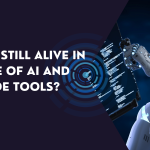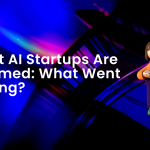Quick Take
Most AI startups today rely on foundational models like OpenAI, creating products with limited differentiation, but companies that innovate on top of these frameworks can still provide meaningful value.
The rise of large language models (LLMs) like OpenAI’s GPT series has reshaped the AI startup landscape, sparking debate about whether most startups are merely repackaging existing technology. A closer look at the industry reveals a mix of reliance on foundational models and genuine innovation, but the balance often leans towards the former.
The Wrapper Phenomenon
A significant portion of AI startups operate as “wrappers,” layering custom interfaces or workflows on top of existing APIs. This approach leverages the accessibility and power of models like OpenAI, Anthropic’s Claude, or Cohere, enabling rapid product deployment without the need for extensive resources. However, the reliance on prebuilt models raises concerns about scalability, differentiation, and long-term sustainability.
As one commenter succinctly noted, “These startups often act as salesmen for foundational models, offering little beyond the UI.” While this strategy can provide short-term market opportunities, it faces limitations as foundational model providers continue to expand their offerings, potentially rendering many wrapper startups redundant.
The High Barrier to Entry
Building proprietary models from scratch is prohibitively expensive. Training an advanced LLM can require upwards of $1 billion, placing it far beyond the reach of most startups. Instead, companies often focus on fine-tuning open-source models or customizing existing APIs to cater to specific use cases.
For example, startups like Apic-AI, which monitors pollinator movements in agriculture, demonstrate how machine learning can address niche markets without relying heavily on generative AI. Similarly, companies in sectors like medical imaging, climate modeling, and document analysis are finding ways to innovate beyond simple LLM applications.
The Path to Differentiation
Despite the prevalence of wrappers, there are opportunities for startups to stand out:
• Customization for Specific Needs: Tailoring solutions to unique industries or workflows can provide value that foundational models alone cannot. For instance, startups using LLMs to automate loan document analysis or improve medical diagnostics highlight how targeted applications can offer genuine impact.
• Balancing Cost and Control: As API costs rise, some startups are investing in self-hosted or fine-tuned models, gaining more control over their technology and reducing dependency on third-party providers.
• Beyond Generative AI: Companies that explore other facets of machine learning, such as predictive analytics or computer vision, are less likely to face saturation. These approaches can tap into underexplored markets with significant demand.
The Future of AI Startups
The ecosystem of AI startups is evolving. While the “wrapper” phenomenon is prevalent today, the startups that succeed will be those that push beyond surface-level integrations, offering transformative solutions to real-world problems.
In the words of one industry insider, “We’re at the starting line for this tech. The real breakthroughs will come from companies that innovate on top of foundational models, not just wrap them in a new package.”
The next wave of AI startups must navigate a crowded market by prioritizing differentiation, value creation, and long-term sustainability. Those that do will rise above the noise and define the future of AI.



